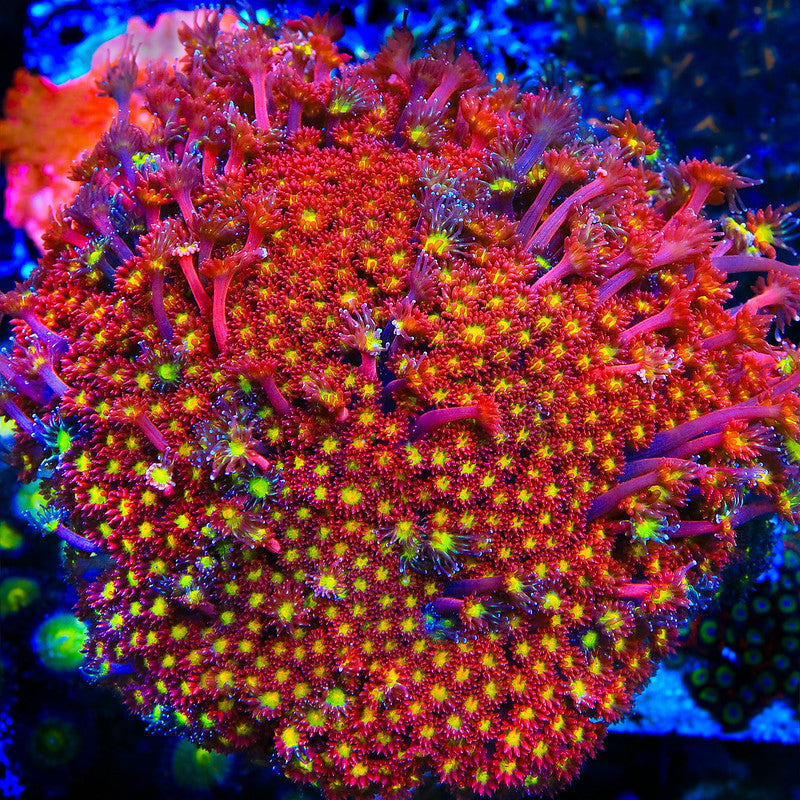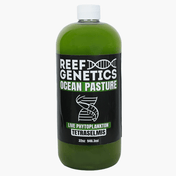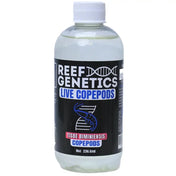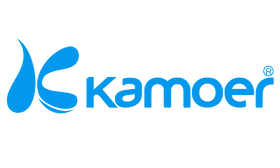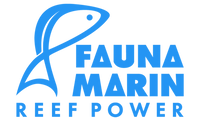Introduction: What is Goniopora Coral Care
Goniopora coral care involves specific lighting, flow, feeding, and water parameter management that helps reef aquarists successfully maintain these stunning flowerpot corals. In this guide, you’ll learn what proper goniopora care entails, why it’s challenging, and how to apply proven techniques effectively.
This comprehensive guide covers species identification, optimal water parameters, feeding protocols, troubleshooting common issues, and real success stories from experienced reef keepers. Whether you’re a first time goniopora keeper or looking to improve your current care methods, you’ll discover the specific techniques that separate thriving goniopora colonies from those that decline within weeks.
Modern aquaculture has transformed these once “impossible” corals into manageable reef inhabitants when you understand their nutritional requirements and environmental needs.
Differentiating Goniopora, Bernardopora, and Alveopora Corals
While often grouped together due to their flower-like appearance, Goniopora, Bernardopora, and Alveopora corals are distinct genera with unique characteristics that influence their care and identification in reef aquariums.
Goniopora Corals: Known for their large polyp stony (LPS) structure, Goniopora species typically have between 18 to 24 long tentacles per polyp. This high tentacle count gives them a fuller, daisy-like appearance and contributes to their common name, flowerpot coral. Their dense tentacle arrangement and flowing movement make them a captivating centerpiece in reef tanks.
Bernardopora Corals: Previously mistaken for smaller Goniopora varieties, Bernardopora species are now recognized as a separate genus. They tend to have smaller polyps and a more encrusting growth form. Bernardopora can be territorial and may sting nearby corals, so careful placement is necessary to avoid contact damage.
Alveopora Corals: Alveopora species have a more delicate look with only 12 tentacles per polyp, about half the number found in Goniopora. Their tentacles are thinner and more flexible, creating a starburst-like appearance. Alveopora are generally more forgiving and adaptable, making them suitable for hobbyists who want a flower-like coral but with less demanding care requirements.
Understanding these differences—especially the tentacle count and growth habits—helps reef keepers correctly identify each coral type and tailor care practices accordingly, ensuring healthier and more vibrant colonies.
Why Proper Goniopora Care is Critical for Reef Success
Goniopora corals historically earned an “impossible to keep” reputation due to their notorious 3-6 month delayed mortality pattern that frustrated countless reef aquarists. During the early days of the reef aquarium hobby, success rates for wild-collected specimens remained below 20%, leading many to avoid these stunning corals entirely.
Modern aquaculture techniques have revolutionized goniopora success rates, with properly maintained aquacultured specimens now achieving approximately 80% survival rates over the first year. This dramatic improvement stems from better understanding of their specific nutritional requirements and environmental needs.
These corals provide exceptional value as centerpiece corals, offering hypnotic water movement through their constantly flowing tentacles and vibrant colors ranging from brilliant greens and purples to striking reds and blues. A thriving goniopora colony becomes the focal point of any reef system, creating natural beauty that captivates observers.
The difference between wild-collected and aquacultured specimens cannot be overstated - aquacultured varieties adapt significantly better to reef aquarium conditions and show greater tolerance for minor parameter fluctuations that commonly stress wild specimens.
Essential Water Parameters and Comparison Table
Essential water parameters for successful goniopora coral care include maintaining a stable temperature between 75-78°F (24-26°C). Consistent salinity levels of 1.024-1.026 are crucial to prevent stress across all species. The pH should be kept within 8.1-8.4, favoring the higher end to support skeletal growth.
Alkalinity, the most critical parameter for long-term success, should remain stable between 8-10 dKH, with beginners aiming for 8-9 dKH and advanced keepers targeting 9-10 dKH. Calcium levels need to be maintained between 400-450 ppm to support continuous skeletal growth, with slight variations for different experience levels. Magnesium, essential for balancing calcium and alkalinity, should be kept between 1250-1350 ppm.
Nutrient levels, including nitrate (5-10 ppm) and phosphate (0.03-0.1 ppm), must be carefully managed; too little nutrients can cause tissue recession, so moderate amounts are necessary to promote healthy tissue growth. These parameters collectively create the optimal environment for goniopora corals to thrive and maintain their vibrant appearance.
Stable alkalinity represents the most critical factor for long-term goniopora success. Fluctuations in alkalinity levels directly impact skeletal growth and can trigger rapid tissue recession even in established colonies.
Unlike many other species, goniopora corals actually require moderate nutrient levels to thrive. Ultra-clean systems with near-zero nitrates and phosphates often lead to tissue thinning and eventual mortality.
Step-by-Step Guide to Successful Goniopora Care
Step 1: Proper Lighting Setup
Goniopora corals require moderate lighting intensity, typically PAR levels between 100-200 for most species. Too little light restricts their photosynthetic capacity, while excessive lighting can cause bleaching and tissue damage.
Recommended lighting configuration:
- 12,000K spectrum with blue and coral plus T5 combinations
- LED systems with adjustable intensity controls
- Metal halides positioned at appropriate distances
Acclimation protocol for new specimens:
-
Begin with 50% target lighting intensity
-
Gradually increase 10% weekly over 6 weeks
-
Monitor polyp extension patterns during adjustment period
-
Watch for signs of stress including polyp retraction
Signs of proper lighting include consistent polyp extension throughout the day and healthy tissue coloration. Polyps that remain retracted during daylight hours often indicate lighting stress requiring immediate adjustment.
Step 2: Water Flow Configuration
Medium flow patterns work best for goniopora corals, creating gentle waving motion without violent thrashing that damages delicate tissue. Water movement should be sufficient to prevent detritus accumulation while allowing full polyp extension.
Optimal flow setup techniques:
- Position powerheads to create random, non-laminar flow
- Use wavemakers with variable speed settings
- Aim for gentle swaying motion of extended tentacles
- Avoid direct flow streams hitting the coral
Placement strategies:
- Lower to middle reef areas with indirect flow
- Sufficient room around the colony for expansion
- Protection from aggressive neighboring corals
- Access for regular target feeding sessions
Monitor polyp behavior closely - properly flowing water creates rhythmic swaying, while too much flow causes constant violent motion and polyp retraction.
Step 3: Feeding Protocol and Nutrition
Consistent feeding represents the cornerstone of successful goniopora care. These corals require regular nutritional supplementation beyond their photosynthetic capabilities to maintain healthy tissue and skeletal growth.
Essential feeding schedule:
- Feed 2-3 times weekly with high-quality coral foods
- Target feeding sessions lasting 15-20 minutes
- Turn off circulation pumps during feedings
- Resume flow after food consumption period
Recommended coral foods:
- Reef Roids (powdered plankton blend)
- Liquid amino acids for tissue health
- Phytoplankton suspensions
- Specialized LPS coral foods
Target feeding technique:
-
Turn off all water movement systems
-
Mix coral food with tank water in small container
-
Use turkey baster to deliver food directly to polyps
-
Watch for feeding response and tentacle movement
-
Allow 15-20 minutes for food consumption
-
Resume normal flow patterns
A positive feeding response includes increased tentacle activity and visible food capture. Colonies that ignore food offerings may require parameter adjustments or different food types.
Common Goniopora Care Mistakes to Avoid
Mistake 1: Choosing wild-collected specimens over aquacultured varieties - Wild specimens carry significantly higher mortality risk and often succumb to delayed collection stress even after months of apparent success.
Mistake 2: Inadequate feeding leading to tissue recession and mortality - Many reef aquarists assume photosynthetic corals don’t require supplemental feeding, but goniopora specifically need regular nutritional support to maintain healthy tissue.
Mistake 3: Excessive water flow causing polyp damage and stress - High-flow systems popular with SPS corals often damage goniopora tissue and prevent proper feeding response.
Mistake 4: Unstable alkalinity levels affecting skeletal growth - Alkalinity swings stress goniopora more than other parameters, often triggering rapid decline in otherwise healthy colonies.
Pro tip: Start with Goniopora lobata or tenuidens species before attempting sensitive varieties like G. stokesi. These hardy species allow you to develop proper care techniques with more forgiving specimens.
Troubleshooting FAQs for Goniopora Care
Q1: Why aren’t my goniopora polyps extending fully? A1: Check flow levels, lighting intensity, and feeding consistency - polyp retraction often indicates environmental stress from excessive water movement or inadequate nutrition.
Q2: Can goniopora recover from tissue recession? A2: Yes, with proper coral dips, stable parameters, and patience - early intervention improves success rates significantly. Address alkalinity stability and feeding protocols immediately.
Q3: Are goniopora suitable for beginners? A3: Aquacultured G. tenuidens and G. lobata are beginner-friendly, while G. stokesi requires advanced reef keeping experience and precise parameter control.
Q4: How do I frag goniopora safely? A4: Use diamond band saw between polyps, ensure 2-3 polyps per frag, recover in low-flow conditions with reduced lighting for optimal healing.
Q5: What causes sudden goniopora decline after months of success? A5: Delayed mortality from initial collection stress, alkalinity swings, or accumulated tissue damage from poor flow patterns can trigger rapid decline even in established colonies.
Conclusion: Key Takeaways for Goniopora Success
The five most critical factors for goniopora success include: species selection (choose aquacultured varieties), moderate lighting (PAR 100-200), gentle flow patterns, consistent feeding schedules, and stable alkalinity levels. These elements work together to create the optimal environment for thriving goniopora colonies.
Success with these remarkable corals requires patience and consistency over quick fixes. Each adjustment should be made gradually while monitoring polyp response over weeks rather than days. Small parameter changes often produce better results than dramatic corrections.
Start with hardy species like G. lobata or G. tenuidens before advancing to challenging varieties such as G. stokesi. This progression allows you to develop proper care techniques with more forgiving specimens while building confidence for future success.
Next steps: Monitor polyp extension daily to catch early signs of stress, maintain your feeding schedule consistently, and join goniopora keeper communities for ongoing support and troubleshooting advice from experienced reef aquarists.
Remember that modern aquacultured goniopora offer unprecedented success opportunities compared to historical wild-collected specimens. With proper care techniques, these stunning flower pot corals can become the centerpiece of your reef aquarium for years to come.

